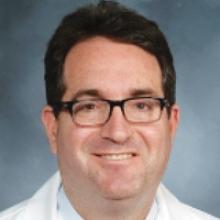Potential Weaknesses in Major Trial Explored in Reevaluating CPAP Benefits
LAS VEGAS—Although continuous positive airway pressure (CPAP) failed to protect patients with obstructive sleep apnea from cardiovascular events in a recently completed large randomized trial, the results are not definitive, according to Alan Z. Segal, MD, Associate Professor of Clinical Neurology at Weill Cornell Medical College in New York City. In an update on sleep disorders at the American Academy of Neurology’s Fall 2016 Conference, Dr. Segal explained that the average adherence to CPAP in this trial, called SAVE, was less than that which has been widely accepted as adequate.
“Medicare has a requirement that CPAP be used for more than four hours on 70% of nights in a 30-day period for patients to keep their device,” observed Dr. Segal, providing one example of a way in which four hours or more of CPAP has been defined as a minimum duration. In the SAVE study by McEvoy et al, the mean duration of CPAP was 3.3 hours. Only 42% of patients met the four-hour definition of adherence, which was the duration the authors themselves had defined as good adherence.
“Our field was very much affected by this study,” Dr. Segal acknowledged. “It created quite a lot of controversy and criticisms over methodologic flaws. Like any study that does not produce the results we want, we start to pick at it to identify where it might have been inadequate, and the biggest inadequacy of this particular study is that patients in the CPAP arm may not have been adequately treated.”
Adherence Versus Effectiveness
In this study, 2,717 patients with moderate-to-severe obstructive sleep apnea and a history of coronary or cerebrovascular disease were randomized to CPAP plus usual care or usual care alone. The primary composite end point of the trial was death from cardiovascular causes, myocardial infarction, stroke, or hospitalization for unstable angina, heart failure, or transient ischemic attack.
After a mean follow-up of 3.7 years, an event had occurred in 17% of those in the CPAP group versus 15.4% of those in the usual-care group, producing a nonsignificantly increased hazard ratio (HR 1.10) for the primary end point in the CPAP arm. CPAP did reduce snoring and daytime sleepiness as well as improve quality of life and mood, all of which were secondary end points.
“The natural next step would be to look at the subgroup of patients who did have good adherence to CPAP, but the study was not powered to look at that,” Dr. Segal said. Although he reported that a post hoc analysis did show “a trend for benefit in those patients who actually adhered to the therapy,” these data are not sufficient to challenge the primary conclusion.
There was a reasonable expectation that CPAP, which has been an effective treatment in this and other trials for the symptoms of obstructive sleep apnea, would reduce cardiovascular events, according to the authors of the SAVE study. They cited strong evidence that obstructive sleep apnea increases the risk of stroke and other cardiovascular events, so control of the disorder had the potential to be protective. Moreover, CPAP has been specifically associated with improved endothelial function, improved insulin sensitivity, and reduced systolic blood pressure in patients with hypertension.
Study Flaw or Real-World Experience?
Yet judging CPAP on an intention-to-treat basis may be appropriate, because several other trials cited by the authors of SAVE, all of which were also negative for a cardiovascular benefit, have also found median adherence to be less than four hours. In SAVE, the mean adherence was 4.4 hours per night during the first 12 months of the trial, but it fell subsequently. As a reflection of what can be expected from a prescription of CPAP, the lack of protection from cardiovascular events in SAVE may not reflect a fundamental inability of CPAP to protect against vascular events, but the negative result is relevant if typical use means low adherence.
“CPAP adherence is a challenge,” Dr. Segal acknowledged. “In a dedicated sleep center such as ours, we work closely with patients to help them with adherence. One of the ways we do that is through mask fittings to find the style with which the patient is most comfortable.”
Mask styles range from minimalist devices that fit the nostrils to full “fighter-pilot” devices fitting over the entire face, according to Dr. Segal. He estimated that there are about 30 mask styles now available, and added that considerable time is devoted at his center to helping patients make the best choice.
Adherence may also be improved using modern devices, according to Dr. Segal. One example is software that ramps up pressure slowly so that the target pressure is not reached until the patient is already asleep, making use more acceptable. Another is technology that reduces pressure at each exhalation, facilitating a more natural breathing cycle and also increasing patient acceptance. Newer machines equipped with automated titration may also add convenience and ease of use.







